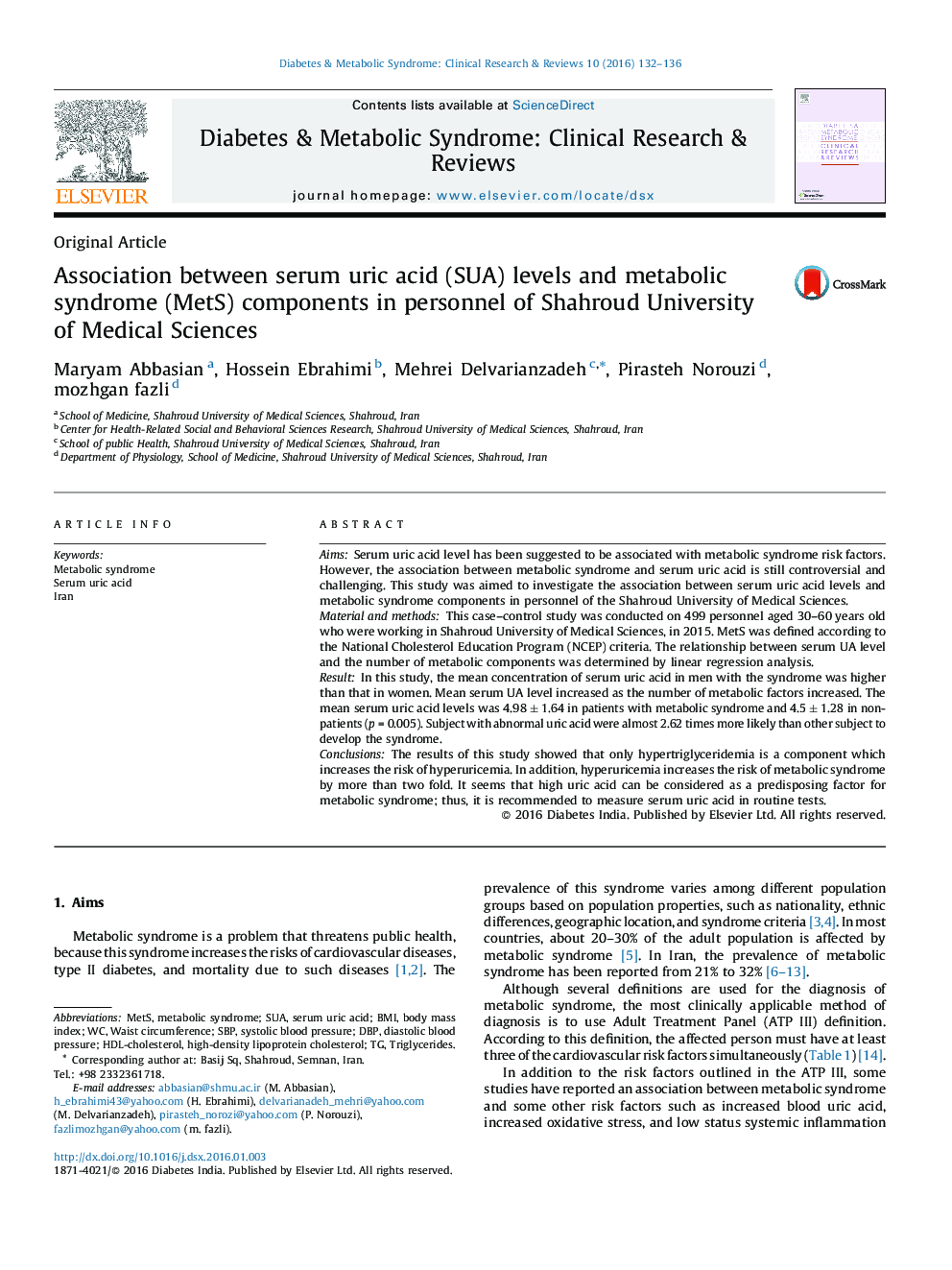| Article ID | Journal | Published Year | Pages | File Type |
|---|---|---|---|---|
| 2909776 | Diabetes & Metabolic Syndrome: Clinical Research & Reviews | 2016 | 5 Pages |
AimsSerum uric acid level has been suggested to be associated with metabolic syndrome risk factors. However, the association between metabolic syndrome and serum uric acid is still controversial and challenging. This study was aimed to investigate the association between serum uric acid levels and metabolic syndrome components in personnel of the Shahroud University of Medical Sciences.Material and methodsThis case–control study was conducted on 499 personnel aged 30–60 years old who were working in Shahroud University of Medical Sciences, in 2015. MetS was defined according to the National Cholesterol Education Program (NCEP) criteria. The relationship between serum UA level and the number of metabolic components was determined by linear regression analysis.ResultIn this study, the mean concentration of serum uric acid in men with the syndrome was higher than that in women. Mean serum UA level increased as the number of metabolic factors increased. The mean serum uric acid levels was 4.98 ± 1.64 in patients with metabolic syndrome and 4.5 ± 1.28 in non-patients (p = 0.005). Subject with abnormal uric acid were almost 2.62 times more likely than other subject to develop the syndrome.ConclusionsThe results of this study showed that only hypertriglyceridemia is a component which increases the risk of hyperuricemia. In addition, hyperuricemia increases the risk of metabolic syndrome by more than two fold. It seems that high uric acid can be considered as a predisposing factor for metabolic syndrome; thus, it is recommended to measure serum uric acid in routine tests.
